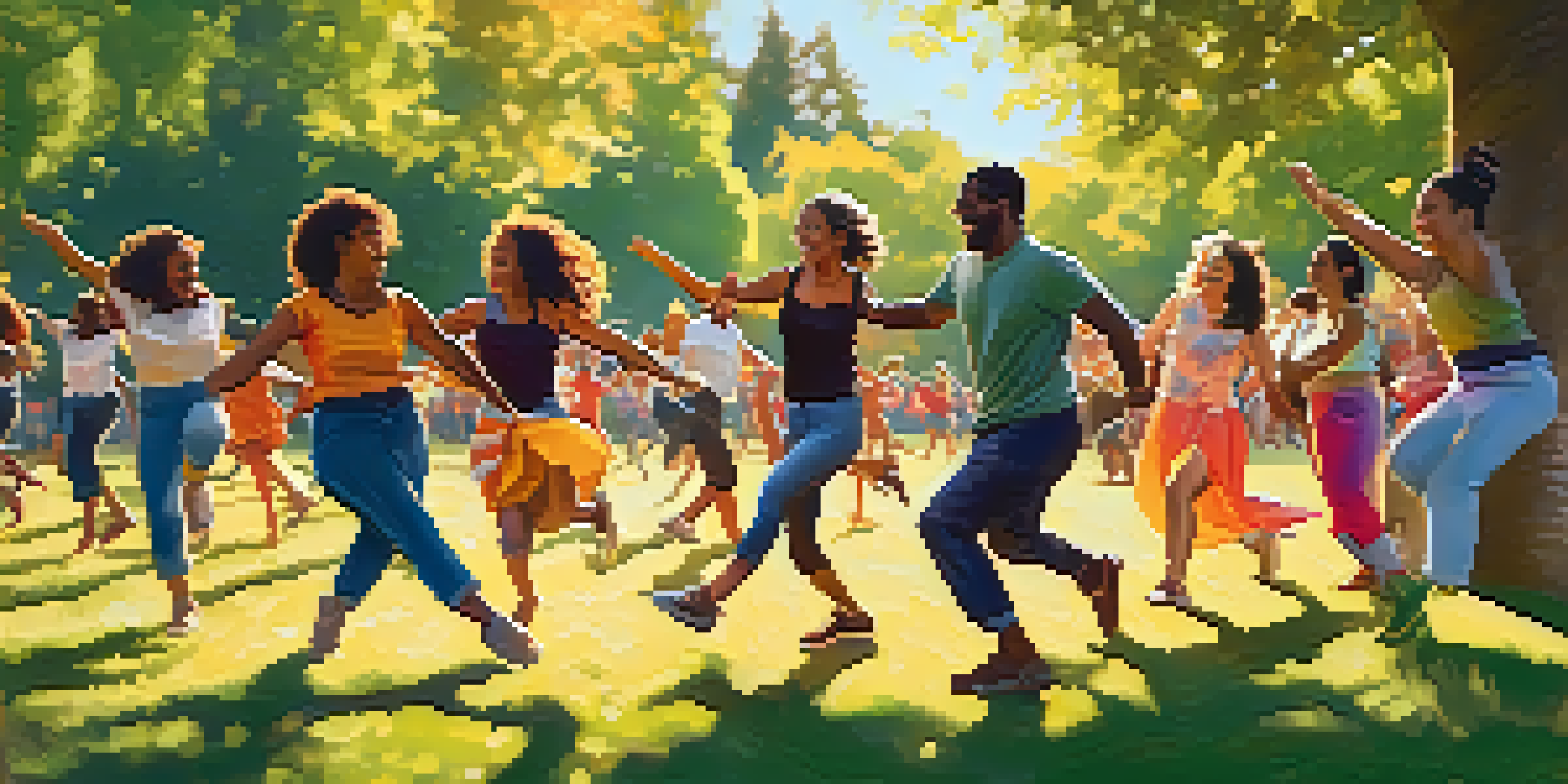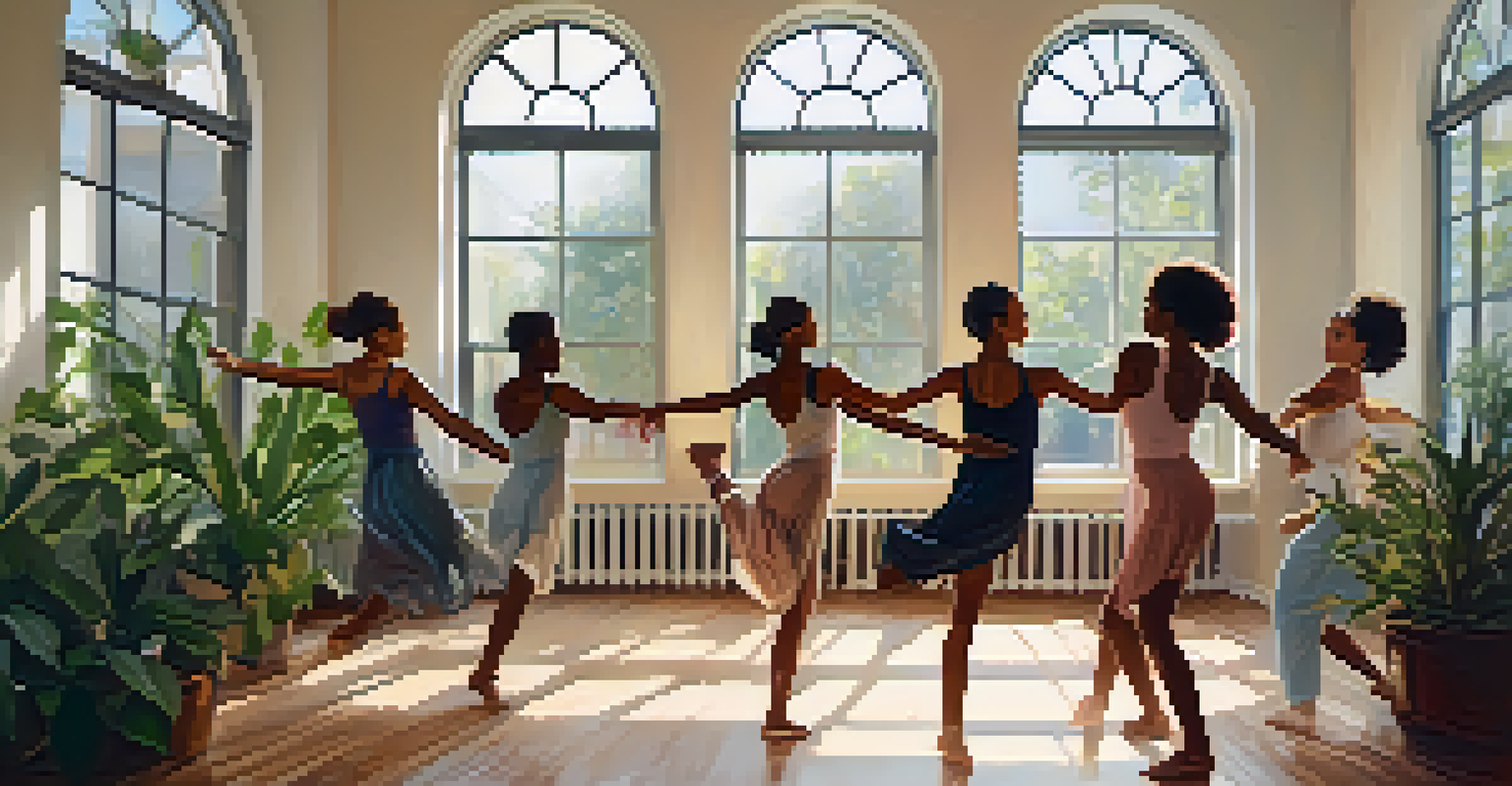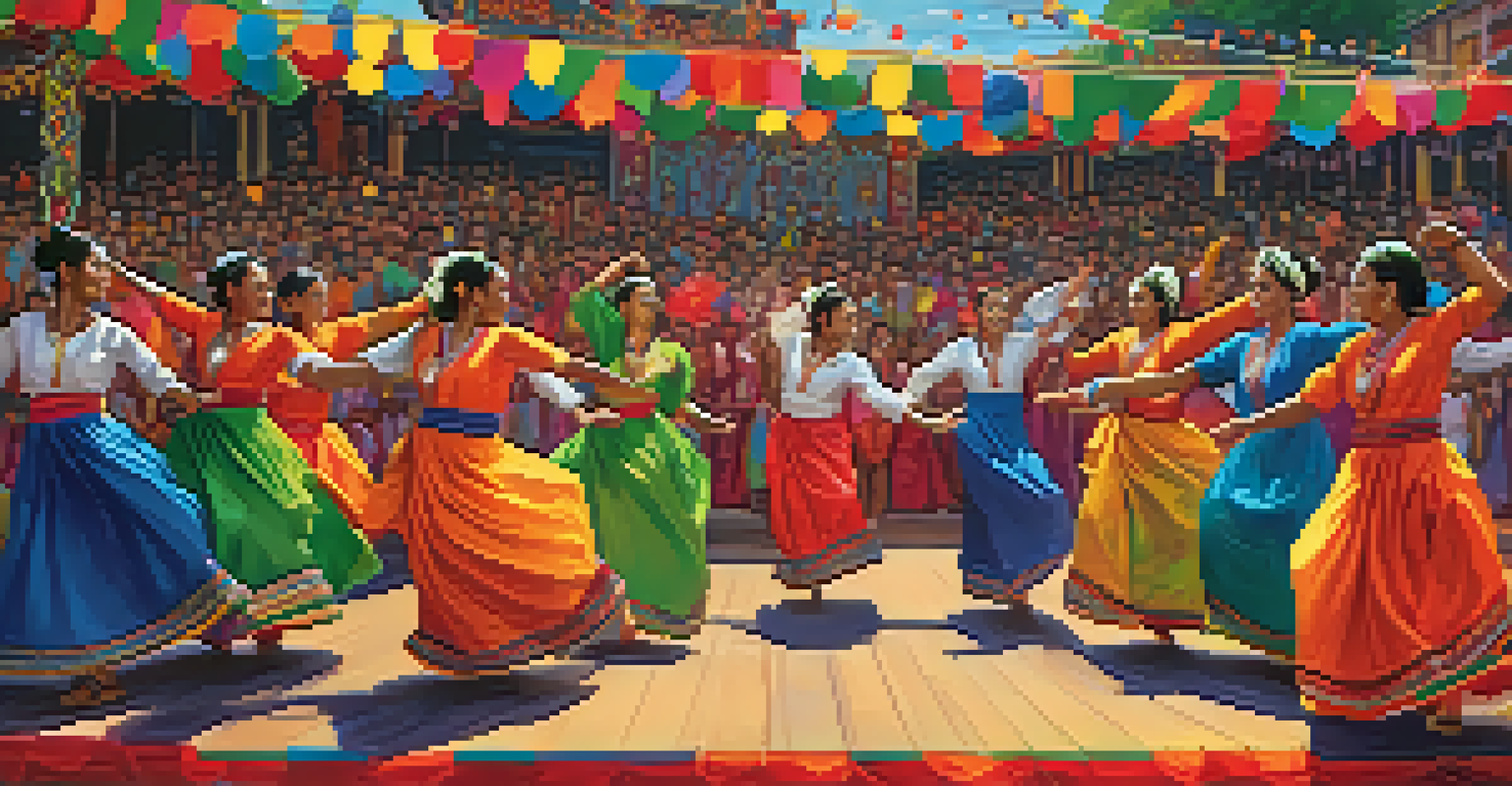The Role of Dance in Promoting Inclusion for Marginalized Groups

Understanding Dance as a Universal Language
Dance transcends words, acting as a universal language that connects people across cultures. It's a means of expression that allows individuals to convey emotions and stories without needing to articulate them verbally. For marginalized groups, this can be especially empowering, as it provides a platform to share their experiences and perspectives.
Dance is the hidden language of the soul.
When individuals engage in dance, they often find common ground with others, fostering connections that might not have been possible otherwise. This shared experience can break down barriers, encouraging dialogue and understanding among diverse communities. In this way, dance serves not just as an art form, but as a bridge for building relationships.
Moreover, through dance, individuals can reclaim their identities and celebrate their cultures. This act of sharing their unique backgrounds can foster pride and promote visibility for marginalized groups, further enhancing their sense of belonging within the broader community.
Dance Programs: Creating Safe Spaces for Expression
Dance programs specifically designed for marginalized groups provide a safe haven for individuals to express themselves freely. In these environments, participants can explore their identities and experiences without the fear of judgment or discrimination. This safety is crucial for fostering creativity and self-discovery.

For instance, community-based dance workshops can bring together people from various backgrounds, encouraging collaboration and mutual support. Participants often bond over shared experiences, forming friendships that extend beyond the dance floor. These connections can significantly enhance their overall sense of belonging.
Dance as a Universal Connector
Dance transcends cultural barriers, allowing individuals to express emotions and share experiences without words.
Additionally, these programs often emphasize inclusivity and accessibility, ensuring that everyone, regardless of ability or background, can participate. This inclusivity not only enriches the dance experience but also promotes a culture of acceptance and understanding within the community.
The Healing Power of Dance for Marginalized Individuals
Dance can serve as a powerful therapeutic tool, particularly for individuals who have faced marginalization. Engaging in dance allows for the release of pent-up emotions and can facilitate healing from trauma. This cathartic experience is vital for those who may feel voiceless in society.
The dance is a poem of which each movement is a word.
Through movement, individuals can reconnect with their bodies and express feelings that may be difficult to verbalize. This process can lead to increased self-acceptance and confidence, empowering participants to embrace their identities fully. The act of dancing becomes not only a form of expression but also a pathway to personal growth.
Moreover, group dance sessions can amplify this healing effect, as participants find solace in shared experiences. The collective movement fosters a sense of community, reminding individuals that they are not alone in their struggles, thus promoting emotional resilience and solidarity.
Highlighting Cultural Heritage Through Dance
For many marginalized communities, dance is a vital expression of cultural heritage. Traditional dances often tell stories of ancestral struggles, triumphs, and celebrations, preserving history and fostering pride. Participating in these dances allows individuals to connect with their roots and share their culture with others.
Cultural dance forms serve as a medium for education, teaching others about diverse traditions and practices. When marginalized groups showcase their dances, they not only celebrate their identity but also challenge stereotypes and misconceptions. This visibility is essential for promoting understanding and respect in a multicultural society.
Safe Spaces for Self-Expression
Dance programs for marginalized groups create supportive environments where participants can explore their identities freely.
Furthermore, intergenerational dance initiatives can strengthen community ties, as older generations pass down their knowledge and skills to the youth. This exchange not only keeps traditions alive but also empowers the younger generation to take pride in their heritage, ensuring that cultural narratives continue to thrive.
Dance as a Tool for Advocacy and Activism
Dance has long been used as a powerful tool for advocacy and social change. Through performance, artists can draw attention to pressing social issues, including those affecting marginalized communities. This form of activism can be incredibly impactful, as it engages audiences on both emotional and intellectual levels.
For example, choreographers often create works that address themes of injustice, inequality, and discrimination, prompting discussions that might not occur otherwise. By incorporating dance into advocacy efforts, marginalized individuals can amplify their voices and connect with broader audiences. This visibility can lead to greater awareness and support for their causes.
Moreover, community-based dance activism encourages participation from diverse groups, fostering collaboration and solidarity. As individuals unite through dance, they can collectively advocate for change, demonstrating the strength that comes from inclusivity and shared purpose.
The Impact of Social Media on Dance and Inclusion
In today's digital age, social media plays a significant role in promoting dance as a vehicle for inclusion. Platforms like Instagram and TikTok allow dancers from marginalized communities to showcase their talents and tell their stories to a global audience. This increased visibility can help challenge stereotypes and foster understanding.
Social media also facilitates the formation of online communities where individuals can connect, share experiences, and support one another. These virtual spaces can be particularly beneficial for those who may feel isolated in their local environments. By engaging with others who share similar backgrounds or interests, individuals can find a sense of belonging.
Cultural Heritage Through Dance
Traditional dance serves as a vital expression of cultural heritage, fostering pride and educating others about diverse backgrounds.
Furthermore, viral dance challenges often promote inclusivity, inviting participants from all walks of life to join in. These trends can spark conversations about diversity and representation, highlighting the importance of inclusion in the dance world and beyond.
Future Directions: Expanding Dance for Inclusion Initiatives
Looking ahead, it's essential to expand dance initiatives that promote inclusion for marginalized groups. This can involve increasing funding for community programs, ensuring accessibility for individuals with disabilities, and providing training for instructors on cultural sensitivity. By investing in these areas, we can create more equitable opportunities for all.
Collaboration with schools, local governments, and arts organizations can further enhance these initiatives. By working together, stakeholders can develop comprehensive programs that address the unique needs of various communities. This collaborative approach can foster a richer, more diverse dance landscape.

Ultimately, the goal should be to create environments where everyone feels empowered to participate and express themselves through dance. By nurturing inclusivity within the dance community, we can contribute to a broader cultural shift toward acceptance and understanding for all marginalized groups.